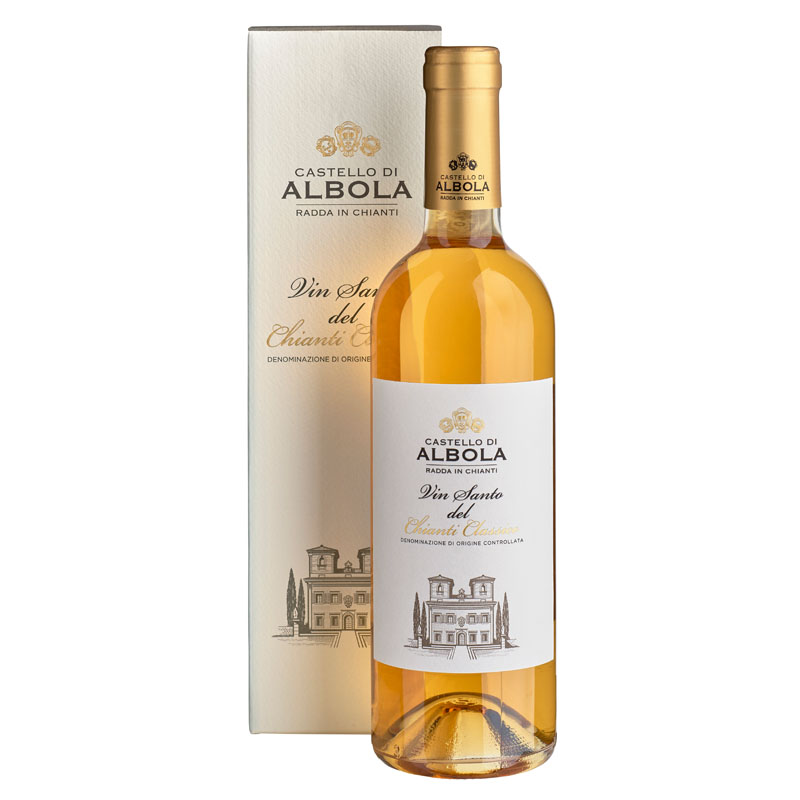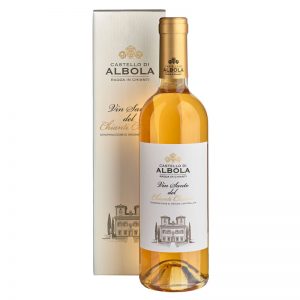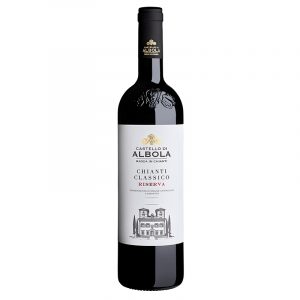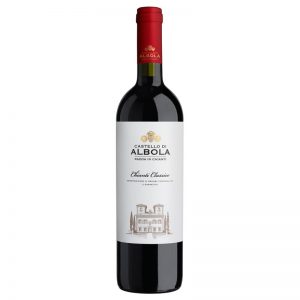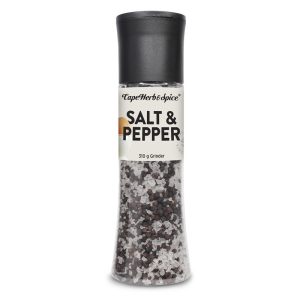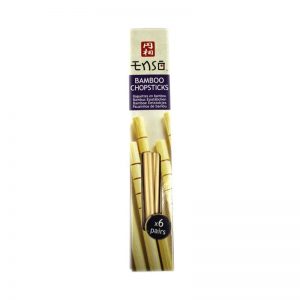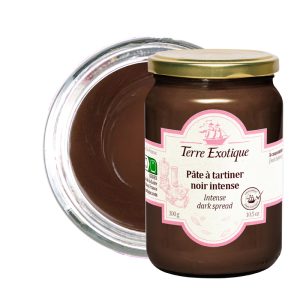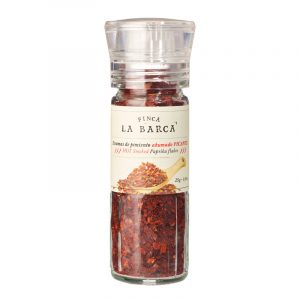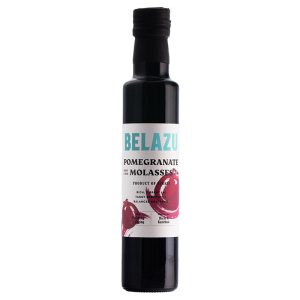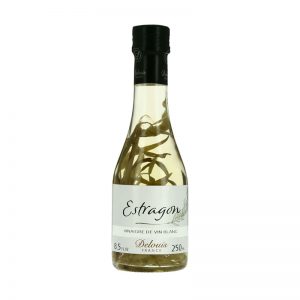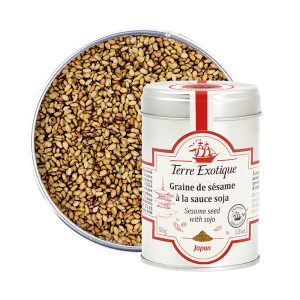Castello Di Albola Castello DAlbola Vin Santo del Chianti Classico DOC 500ml
Castello Di Albola
50,01 €
Golden amber color with luminous reflections. Fragrant with aromas of raisins, apricots, figs, nuts, wood and honey. The palate is full and warm with a velvety texture, delicate notes and an extraordinary finish. Accompanies fois gras and perfectly complements desserts such as Cantucci, dark chocolate and Gorgonzola.
Product Description
Vin Santo (pronounced Vin san-toh), which means “holy wine”, has various theories surrounding its origins. One of the most famous stories tells of a Franciscan monk, who would use it to celebrate Holy Mass. Later, it was more-commonly known for its “holy” or curative power regarding the treatment of ailments.
VINIFICATION AND AGEING: Vinifi cation takes place in caratelli, the typical small Tuscan barrels holding between 100 and 200 liters, and it is triggered by the inoculation of the so-called “madre” (“mother”) – colonies of different types of yeast deriving from previous vinifications – into the must from grapes that have been partially dried on racks. Maturation continues for 8 years in the small chestnut wood barrels, in which the fermentation lastes a very long time but is intermittent, starting and stopping depending on the natural variations of temperature and pressure.
TYPE OF SOIL: The vineyard is situated at Pian d’Albola, in the hills of the commune of Radda in Chianti, with southerly exposure. It is characterized by a clayey subsoil of alberese, in which the presence of stones gives good permeability. The climate is warm and dry.
COLOR: Golden amber with rich, luminous reflections.
BOUQUET: Intense and complex; perfumed with scents of raisins combined with aromas of apricots, figs, dried fruit, wood, and honey fused with aromatic notes of a great personality.
PALATE: Full and warm with a velvety texture, sweet delicate notes and an extraordinary finish.
FOOD PAIRINGS: Pairs well with foie gras; perfectly compliments desserts, such as Cantucci, high quality dark chocolate, Gorgonzola, and nut-based tarts.
Alcohol Content:
16%
Allergens:
Contains sulphites.
Usage Suggestions:
Pairs well with foie gras; perfectly compliments desserts, such as Cantucci, high quality dark chocolate, Gorgonzola, and nut-based tarts.
Country of Origin:
Italy
Distributed by:
Socilink Lda
Rua Quinta dos Álamos n.º 3
2625-577 Vialonga
Notice about our product information:
Always confirm the information on the article label. Food products are subject to constant change, for this reason, we recommend that you always read the labeling information that accompanies each product, including the nutritional information, ingredient list, storage, preparation and use instructions as well as other information before use or consumption.
| SKU# | S12036 |
|---|---|
| EAN# | 8002235000994 |
| ITF14# | 08002235001007 |
| Net Content | 500ml |
| Gross Weight | 1kg |
| Units per box | 6 |
| Catalog Page | 250 |
| Conservation | ambient |
